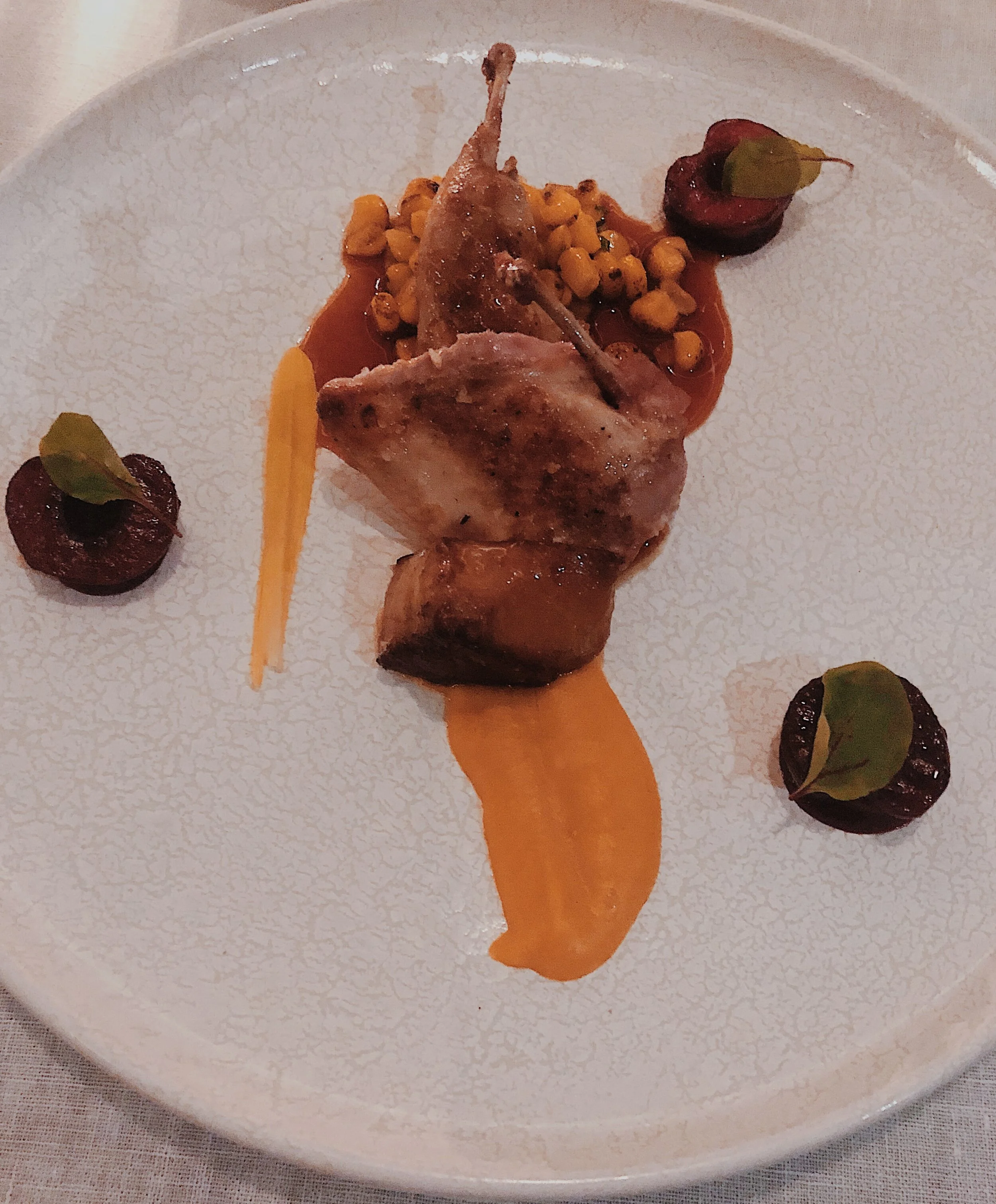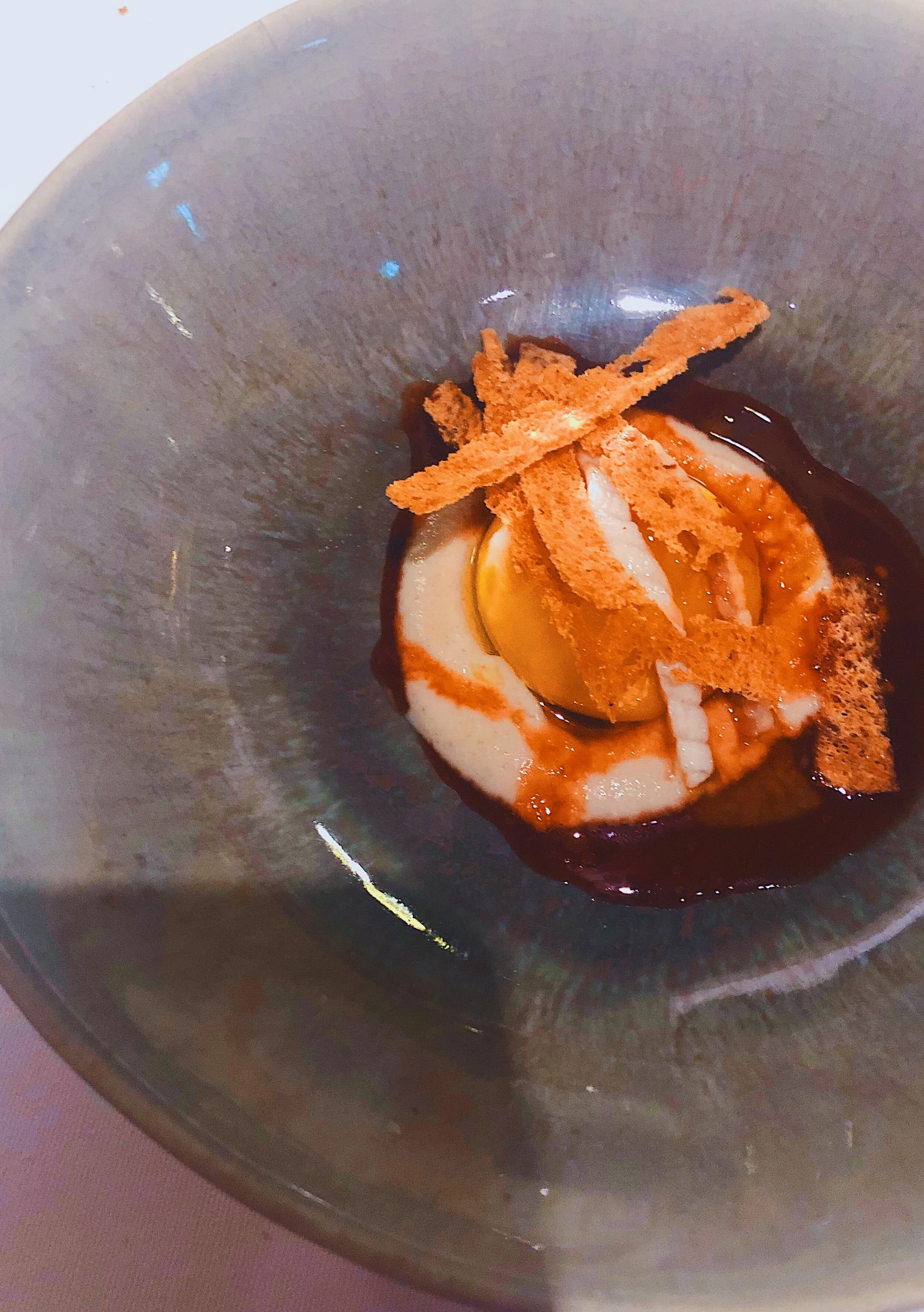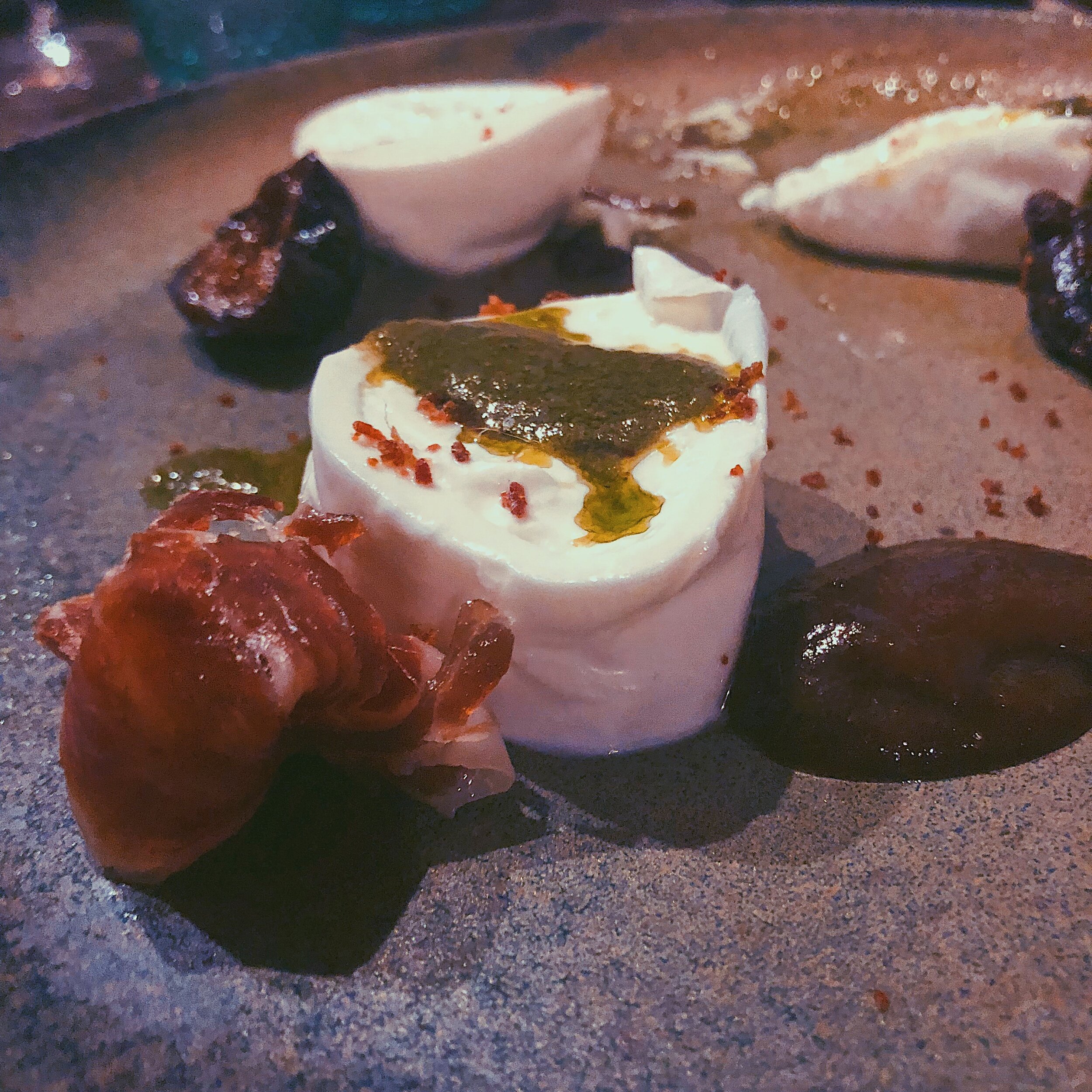What it Means to be the Best: The Quandary of Restaurant Awards
What kind of establishment earns a spot on the World’s 50 Best or stars from the Michelin Guide? How does it influence our perception of food and restaurants as it interacts with culture, media, and travel? I was thinking about this because recently, I visited London and Portugal. While I had heard of Murano before, it was only due to Gordon Ramsay’s stardom and watching Angela Hartnett on “The Great British Menu.” Furthermore, my longing to visit Belcanto sprung forth only after watching Phil Rosenthal in Lisbon, enjoying a meal on his Netflix hit, “Somebody feed Phil.” When I scan the list of the World’s 50 Best or the Michelin guides of the world, I inherently believe the food and wine must be nothing short of fantastic, and the service would make me feel as if I’ve been elevated to the status of a celebrity. These days, travel and food intersect in such a way that some go to exotic places only for a restaurant. As a result, some award-winning establishments transform the act of dining out into the arrival of a grand destination, where diners expect an experience beyond just great food and hospitality. The World’s 50 and Michelin guides, our favorite media personalities, and images of fine food all over media platforms have only enforced our high expectations.
Previously no.1-ranked establishments have been Noma, El Bulli, and El Celler de Can Roca. Does anything come to mind when you think about these restaurants? If you google “Best Restaurants in Copenhagen,” you won’t have any trouble finding Noma. If you’ve never checked out the World’s 50 or flipped through a Michelin Guide, then maybe you’ve never heard of these restaurants. But have you watched shows like “Chef’s Table,” “Parts Unknown,” and “The Final Table”? These programs have shown more mainstream audiences what happens behind the scenes at world-renowned establishments like Alinea and Blue Hill. I think this level of exposure has increased our desire to not only learn more about the industry and the people involved, but also our desire to pay their restaurants a visit. Social media and the rise of the travel-savvy “foodies” has also enhanced our ability to discover and eat at those labeled the most exquisite, delicious, luxurious, and “best” in the world. One can see that the intersection of food and pop culture affects the global dining scene in multiple ways. First, I think it permits us to compartmentalize restaurants based on certain aesthetics and methodologies. I’ll elaborate. I spent my weekend taking a look at the World’s 50 Best between 2017-2019. Eleven Madison Park (EMP) took the top spot in 2017. The last time a restaurant in North America earned the no. 1 spot was in 2003-2004 (The French Laundry). In 2018, Massimo Bottura’s Modena mecca, Osteria Francescana, stole the spotlight. The 2019 crown was given to a restaurant called Mirazur, in Menton, France. It is headed by a chef named Mauro Colagreco. The restaurant seems like a combination of Osteria and EMP. Menton sources hyper-seasonal, local ingredients to create “...colourful, pictorial dishes that play with textures and bold contrasts.” Mirazur ‘s food is thusly reminiscent of Humm’s approach, bringing the withstanding aesthetic and techniques of haute cuisine to a modern and more relevant level. Colagreco—also like Bottura—utilizes the best of his surroundings and his heritage to create multidimensional dishes rooted in a sense of place that illuminate national pride local abundance.
Click the photos and check out these establishments online. Notice some similarities. Price range, menu style, and presentation are very similar. There is an emphasis on local ingredients to showcase technical talent and originality. But what is most similar is their conviction to portray that the food they’re serving is not just really, really good. Their cuisine—this haute cuisine—is not only a style, but a perspective defined by a spectacle of art and science. It seems that the best in the world are places where ingredients are reimagined, chefs push the boundaries of cooking, and diners are made to question the parameters of edible. This is food that subverts itself, and the resulting perspective is what we have aligned with and rewarded as gastronomy.
Unsatisfied, I continued to read and research through consecutive guides and the World’s 50, wondering why these establishments deserved the highest praise. While the foods on the plates were different, I couldn’t determine the differences between a restaurant ranked number one and another at 22. Things just got more confusing when Noma had the top spot in 2010-2012, lost it in 2013, then got it again in 2014. Furthermore, why did Cagen earn a Michelin star one year and then lose it the next?Why!? I digress. What’s important is that the perceived notoriety of these awards seems to reinforce a collective belief of what a world-class restaurant should be. This, however, may ultimately hinder both diners and chefs from enjoying the act exploration and moments of spontaneity in cooking and eating. At Belcanto, for example, I had the option to choose two menus. One was a tasting of the restaurant’s most classic and known dishes, while the other was an adventure through the establishment’s newer and more recent creations. I believed the classics menu served a very specific purpose: it was meant to please those diners looking for the typical “Belcanto experience.” They too wanted to eat the goose that laid the golden egg, just like Phil Rosenthal! But I can’t imagine that feeling obligated to serve a dish from 2017 over and over again is the most fun for the kitchen. In this sense, going to Belcanto—or maybe any World’s 50 or Michelin restaurant—may belike taking a trip to Six Flags or Disneyworld. You enter the space with specific expectations of your experience, and that resulting experience—the one you’ve researched, planned for, and read about—is more or less the same. Sure, the evening is incredible, lavish, and memorable. But I think this is also why these restaurants appeared so monotonous and indiscernible.
I had a brief conversation with chef Rui Paula that only reinforced this feeling. While in the Douro Valley, I spoke with him at DOC. The chef has two more restaurants in Portugal: DOP in Porto and a Michelin-starred establishment called CCBN. I had just eaten a dish composed of pieces of sausage and a slow-poached egg, all hiding under a crumble of toasted bread stained black as night. When I asked him about the inspiration behind the dish, he bluntly replied: “hotdogs.” Paula exuberantly went on to explain that it is important for him to use DOP and DOC as places where both he and his staff can have more fun with food and stay creative. “I have to keep my gears turning,” he told me, “people expect to have certain “moments” at CCBN, where I have a Michelin star. The menus are always the same. But here [at DOC] I get to try new things.”
I’m not saying that the world’s best chefs aren’t incredibly talented and original. However, it appears that the almighty World’s and Michelin judges have created a criterion that reiterates what a best restaurant looks like, feels like, and tastes like. As a result, chefs might think that set tasting menus, fermentation labs, open kitchens, and industrial, minimal, or barnyard-chic interiors are the only way to get stars or their name on the list. In turn, I think this continues to influence eaters’ perceptions that a world-renowned restaurant utilizes only molecular gastronomy and costs hundreds to thousands of dollars, which enculturates specific assumptions about top restaurants in relation to class and wealth. While Michelin and the World’s 50 reinforce an image of a world-class restaurant that subliminally relates to social and economic aspects of society, I think that “Best New Restaurants in America” lists from Eater, GQ,Esquire, and Food & Winehave emerged as something like an antithesis. These platforms and publications therefore helped me to reshape my notions of a restaurant deserving of a “best” label. It could be unintentional, but it seems that America’s bests are not related to luxury, exclusivity, money, or star-power. Instead, they are immersed in anchored by a surrounding community, and attempt to construct a narrative about food in America and the diversity of those who cook and eat it. The constant on 2018 lists was a D.C. spot called Maydan, a restaurant just shy of Dupont Circle in Washington, D.C.
Maydan is influenced by the cuisines of Tangier, Beirut, Tehran, and Batumi. Google Maps calls it a “hip lair for Georgian/North African fare.” Eater D.C. summarized the restaurant as a blend between foods and flavors of Lebanon, Georgia, Syria, Iran, and Morocco. Ultimately, its multiple origins allow co-executive chefs Chris Morgan and Gerald Addison to present foods from underrepresented countries in the United States. This is even evident in its name. Maydan—originally Arabic, but also found in Hindi, Urdu, Ukrainian, and Persian languages—translates most essentially to “gathering place” or “square.” Sharing, then, is the restaurant’s MO. Menu items include spreads like Beiruti hummus, muhamarra, and labneh; kebabs like swordfish with a sauce of orange, onion, butter, and cilantro; and a lamb shoulder rubbed with Syrian seven spice. Additional condiments like harissa, zhough (parsley, cilantro, cumin, serrano), and ezme (tomato, onion, peppers, pomegranate molasses) are essential to enjoy the restaurant’s shining star: bread.
Photo from restaurant’s Instagram
The dough is baked in clay ovens and served as giant, warm, elastic discs to be torn apart and dipped in a variety of spreads. Restauranteur Rose Previte encourages her guests to utilize this food as the vehicle to not only deliver gustatory pleasure but also the joy of sharing a meal— “share with your neighbor, brake bread with your family and friends.” Thus, Maydan appeals to a demographic of what she calls “armchair tasters.” It refers to a group of eaters seeking to understand foods from foreign lands and unknown cultures without leaving the comfort and familiarity of their local neighborhood.
2019 isn’t over yet, but the country’s best new restaurant (according to Eater, GQ,and Food & Wine) might be nestled in the Arts District of Los Angeles. It is called Nightshade. It apparently serves “…striking Asian-Californian cuisine” that changes seasonally. The chef is an unstoppable force named Mei Lin, whose parents brought her from China to Michigan when she was three months old. She grew up working in her family’s Chinese restaurant in Detroit before joining Michael Symon at Roast, and then made her way to Las Vegas at Wolfgang Puck’s Spago. Her debut to the Los Angeles food scene took place as an opening cook for Michael Voltaggio’s ink. in 2011. In regards to Nightshade, chef Lin takes an approach similar to Previte. She states: “I’m drawing from all the different cultures in one restaurant. It’s what I love in eating and cooking: Korean influences, Chinese flavors, and very travel-inspired as well.” (read the rest of theinterview with Resy) Most importantly, she says, is making sure Los Angelenos feel welcomed and at home in her restaurant since she acknowledges that the food at Nightshade may be foreign to an LA-diner. Take the lasagna, for example. It is served with pork ragu, but also a tofu cream and prickly ash. The shrimp toast is served with Japanese milk bread, and the shrimp—turned into a mousse mixed with schmaltz—is spread on top before adorned with fried green curry leaves. It sits in a shallow pool of yellow, Cantonese broth, making a simple piece of toast nothing short of a sensory explosion. Like Maydan, Nightshade also seems to appeal to the armchair tasters. As a result, chef Lin takes on the job of transporting her guests to a through a personal narrative, underrepresented cuisine, and unique flavors.
Photo from the restaurant’s Instagram
Some might think it strange that the “Best New Restaurants in America” offer cuisine from the Middle East and present flavors from Korea and China. In the past, we might have called this “ethnic food.” Today, critics like Soleil Ho from the San Francisco Chronicle and chef/mogul David Chang have openly declared their dislike for labels like “ethnic cuisine” or “ethnic restaurant.” Soleil makes an excellent point on Ed Levine’s podcast, Serious Eats: “think about what kinds of restaurants we’re including under that [“ethnic”] umbrella…don’t we all have ethnicity?” I agree that the usage of “ethnic” in regards to food implies a certain otherness that both manipulates the mainstream definition of American food and reinforces a culinary hierarchy based on race. Going to an “ethnic” restaurant could mean that the food is foreign and questionable, or that the restaurant itself is a strange and unpredictable place. The emergence of the “armchair taster,” though, might reveal a step in the right direction. Television has allowed us to travel to distant regions without leaving the couch. Social media has shown us pictures of unique and delectable foods to seek out and try. Finally, America as the “land of opportunity” has continually promoted the movement of various peoples from various countries, which has helped to create a diverse scape of restaurants and cuisines. While it appears that the World’s 50 and Michelin guides award restaurants that look a certain way, serve in a similar style, or cost a certain amount, the best new restaurants in America allow us to think differently about food beyond that encultured notion of gastronomy.
Maydan tells a well-executed story of a cuisine many of us don’t know about, while Nightshade is a unique blend of tastes born from a chef’s multicultural upbringing. At the helm of both restaurants are women. Mei Lin is an immigrant, and Rose Previte has been influenced by her visits to 30+ countries between 2009-2012. Neither of them offer a tasting menu. Neither of them have a spot on the World’s 50 Best or a *Michelin star. I think what makes these restaurants the “best” is that they represent two compelling stories of a journey and a dream. Through determination, experience, and an entrepreneurial spirit, the achievements of these women show us how restaurants become safe and welcoming spaces for understanding and acceptance. Furthermore, when the problematic shroud of “ethnic cuisine” is deliberately shed, racist implications and abnormality through food dissipates. This allows so-called “American food” to expand in exciting and inclusive ways, which can diversify our definition of America itself. While the best restaurants in the world delivered to me a fabulous experience of food, innovation, and hospitality, the best restaurants in America showed me the bounty and cultural diversity located in various communities, in the comfort of one’s own neighborhood. The best restaurants in America represent the importance of investing in each other, accepting change, and encouraging constant creativity, which reminds us all of gastronomy’s true definition: the practice of choosing, cooking, and eating good food.
*Update, October 2, 2019: Maydan has since earned one Michelin star and will be listed as such in the 2020 guide








